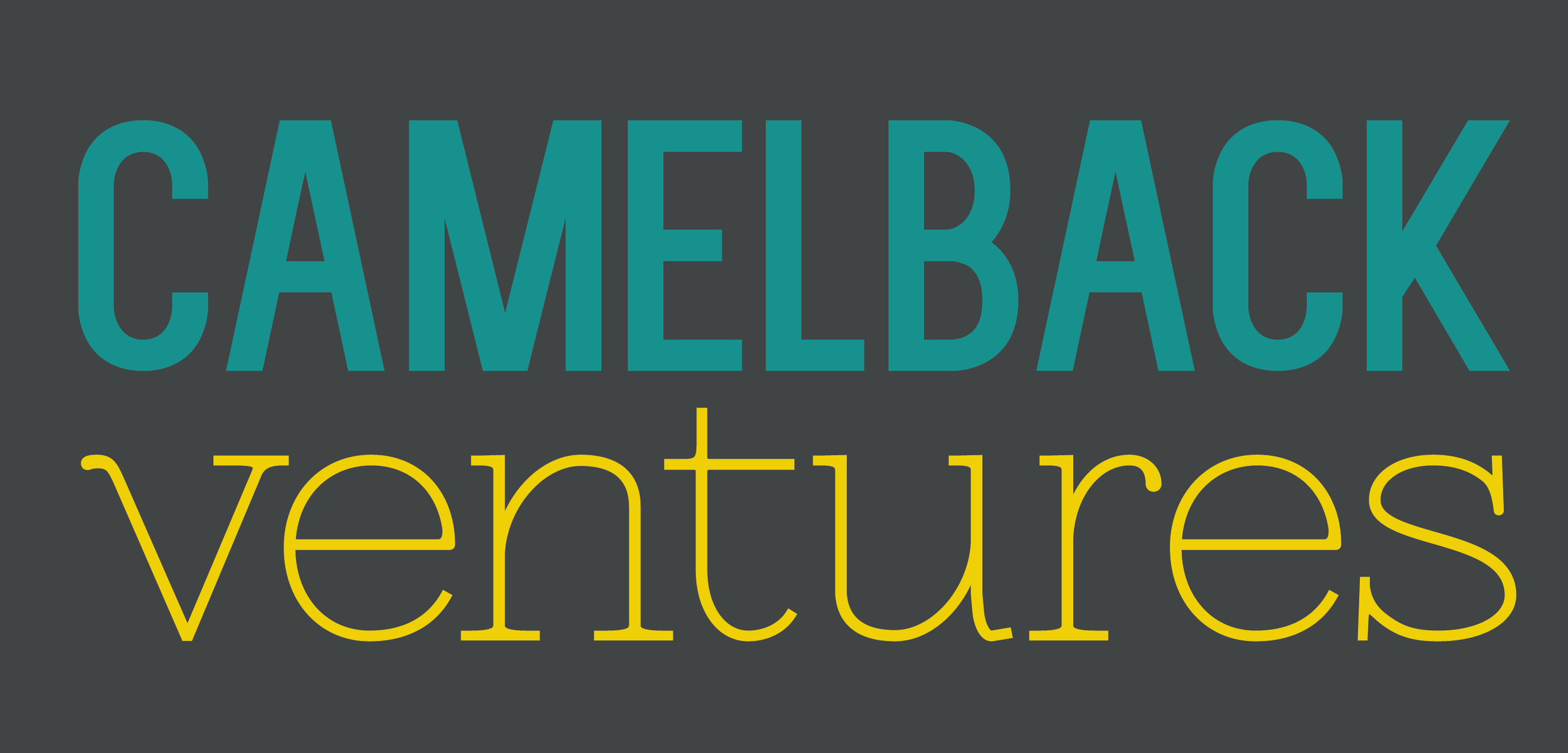Making the A$k: A 3 Step Guide for Pitches
Charla Austin-Harris, 2016 Camelback Fellow, shares the financial needs of her school at the 2016 Camelback Showcase.
Pitch competitions are now so common that they may be going the way of the cupcake or the cronut...after multiplying across the country, surely the startup space will start to feel pitch fatigue? Whether they continue in popularity or whither, one thing will remain the same for entrepreneurs: the initial investments in your idea will always be The Turning Point.
As an Entrepreneurial Engineer with Camelback Ventures, I’m in my second year coaching some spectacular nonprofit leaders. And, through this work and my past 10 years as a fundraiser for nonprofits in New Orleans, I’m beginning to see a trend.
Like the four fellows I’ve supported via Camelback, most early-stage entrepreneurs have a compelling story to tell. They have deep, personal connections to their work. In New Orleans, it seems that we have a pitch competition monthly. Most of our new business leaders get lots of practice telling their stories in front of live audiences, often with the reward of funding if their story rises above the rest. The result of the pitch-madness, in my experience, is for the most part great - more and more entrepreneurs are unafraid of selling their business model.
But where many for-profit leaders seem unafraid to ask for the money they need to start up, I continue to see non-profit leaders struggle to make the ask.
A prime example: 2016 Camelback Fellow Charla Austin Harris (who I was fortunate enough to coach) has a passion for her work but needed to develop her ability to tell the why behind her business model. Just a couple of months into her Camelback fellowship, Charla won a storytelling competition. Her heart is in her business - a school she’ll open in 2019-2020 - and when she speaks, you are compelled by her vision. But, in pitch after pitch during her fellowship, Charla, like many other fellows, struggled to define exactly how early stage investors could support her. Without clearly defining exactly what she needed (i.e. how much capital and when), Charla was missing an opportunity to close the deal after a moving story.
I want to offer to my Fellows and anyone else who needs a simple recipe for ending your pitch with an actual ASK. Because most funders speak finance, it is key that you can not only tell them why your business is important, but explain to them how they can support you in achieving your goals. And, good news, this is the most simple part of your pitch!
Here’s a formula, albeit somewhat simplified,for making a monetary ask (featuring Charla’s school as an example):
STEP 1: Make an Impact Statement
“At full scale, Learning by Design charter school will serve 500 children in Los Angeles at a cost of $8,000 per student annually. We will give our students an educational environment currently unavailable in their district - using project-based strategies to teach a STEM curriculum.”
What this achieves:
Tells funders the Who, What, When, Where, and Why they want to know (to see if you fit their funding streams) in a straightforward way.
STEP 2: Describe Start Up Phase
“We are implementing a slow growth model - adding one grade per year for the next 5 years - and building our staff capacity early, before our school is fully enrolled. During start up, we will build, test, and codify our curriculum, student support services, and staff development plans to ensure success at full scale.”
What this achieves:
This shows funders that you are confident about your next steps, and that they can trust you to not flounder after an investment.
STEP 3: State the Cost & Make the Ask
“In year 5, at full enrollment, our school will be sustainable on the public dollar. We need $1.5M over our first four years to cover start up costs and want you to be a lead investor.”
What this achieves
Demonstrates the same kind of confidence that for-profit leaders feel comfortable sharing when making an ask, and clearly puts your goals on the table so that funders can see how they fit into your work.
I give all of this advice with the caveat that every pitch is different and should be catered to the investor sitting at the table. That being said, all pitches should end in an ask! Without one, many funders may wonder why you were even pitching.
I know there are other great social impact entrepreneurs like Charla out there who have a great concept but are nervous about making that ask. All I can say is, don't be -- when you're at a demo day or a potential investor meeting, it means that you and your audience have entered into an unspoken agreement: you will pitch, and they will be pitched to. You are not only allowed to make this ask, but you must, in order for your venture to become a reality.
On a side note: thank you to Charla for letting me use her as an example - she's crushing it out there! In case you were wondering: after finishing the Camelback Fellowship last year, Charla applied for and received a large start up grant from the NewSchools Venture Fund. She can now be seen all over Los Angeles building community support for the start up of her new school.
Morgan Ripski is a Camelback Entrepreneurial Engineer. Click here to learn more about her or here to learn about our coaching.

